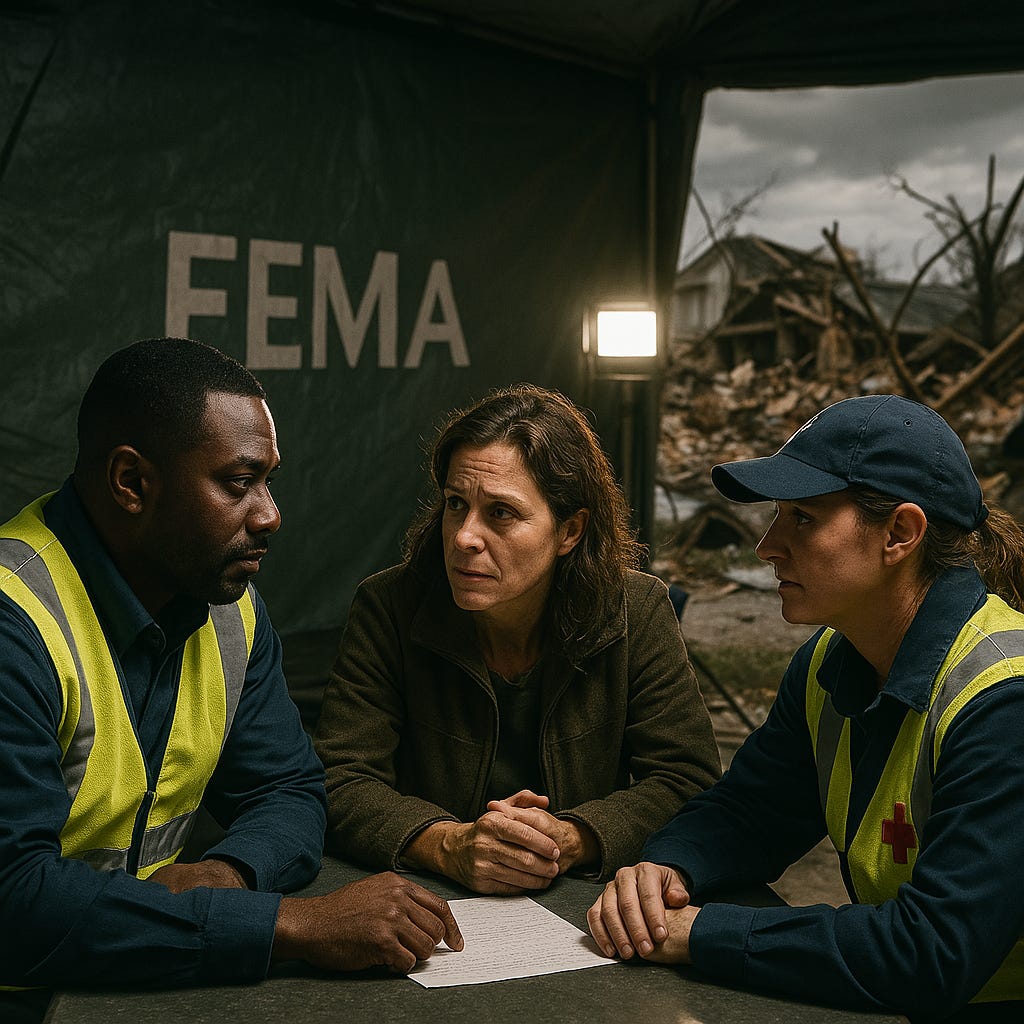🟨 FEMA & Disaster Relief
A guide to advocacy organizations working to strengthen disaster response and protect communities from climate and crisis-related emergencies.
These groups help communities prepare for, endure, and recover from crises—whether through direct service, government coordination, advocacy, or long-term planning. Their work includes defending FEMA’s role and funding, strengthening climate resilience, promoting equitable aid, and offering tools for public engagement.
Many organization websites provide resources for activists, such as policy reports, volunteer opportunities, toolkits, donation portals, advocacy campaigns, and emergency preparedness guides.
🔺 National Policy and Oversight Advocates
These groups help shape public policy, ensure accountability, and defend the federal government’s emergency role.
Disaster Accountability Project (DAP)
Monitors FEMA and other agencies, advocating for effective, transparent, and equitable disaster response.
Offers emergency relief, policy advocacy, and community development to reduce disaster impact, particularly on marginalized populations.
Supports disaster-affected communities with recovery planning and climate resilience initiatives.
🟥 Core Partners: FEMA Coordination and Infrastructure Builders
These nonprofits work closely with FEMA or build essential post-disaster infrastructure.
Federal Emergency Management Agency (FEMA)
FEMA is the lead federal agency coordinating disaster preparedness, response, and recovery in the U.S. It funds local efforts, manages national emergencies, and works closely with nonprofit and faith-based organizations. FEMA’s effectiveness depends on strong support, funding, and public accountability—especially amid political efforts to weaken or dismantle it.
Delivers large-scale disaster relief, emergency shelter, and recovery services across the country in coordination with FEMA and local agencies. It plays a central role in disaster response and offers training, volunteer, and donation opportunities.
National Voluntary Organizations Active in Disaster (NVOAD)
Coordinates dozens of national relief agencies working with FEMA, promoting collaboration in disaster response and recovery.
Assists with post-disaster rebuilding efforts and long-term housing recovery in collaboration with FEMA.
Mobilizes veterans and volunteers to provide rapid disaster response, frequently partnering with FEMA on operations.
🔵 Faith-Based Relief Networks
These groups offer coordinated services through religious organizations and often partner with FEMA.
Offers food, housing, and recovery services during disasters, often in cooperation with FEMA and other federal agencies.
United Methodist Committee on Relief (UMCOR)
Supports disaster response and recovery efforts nationwide, working with FEMA and other partners to assist vulnerable communities.
Provides long-term recovery, housing support, and community assistance in disaster zones, often working with FEMA.
Delivers emergency shelter, meals, and counseling services during disasters in partnership with FEMA.
🟩 Emergency Food and Health Providers
These groups meet urgent needs for nourishment and health care after crises.
Provides fresh meals to disaster-affected communities, often filling gaps before or alongside federal aid.
Addresses food insecurity following disasters by distributing emergency meals, including through FEMA coordination.
Delivers medical supplies and emergency health services during crises in the U.S. and abroad.
Delivers emergency relief, education, and health care services to children and families during U.S. disasters.
Top Issues in Disaster Relief and Emergency Services
Defending FEMA’s Role and Funding: Political attacks threaten FEMA’s authority and effectiveness. Advocacy is needed to protect its operations and ensure adequate resources.
Climate Change and Disaster Frequency: More extreme weather events are increasing the demand for effective preparedness and coordinated federal response.
Equitable Disaster Response: Relief must reach marginalized communities equitably, with attention to racial, economic, and geographic disparities.
Community Resilience and Preparedness: Building local capacity to prepare for, withstand, and recover from disasters is key to reducing long-term harm.
Funding and Resource Allocation: Disaster relief must be fully funded and efficiently distributed, with transparency in government and nonprofit spending.
Policy Advocacy and Accountability: Holding officials and agencies accountable for disaster management policies and decisions strengthens the system for future emergencies.


